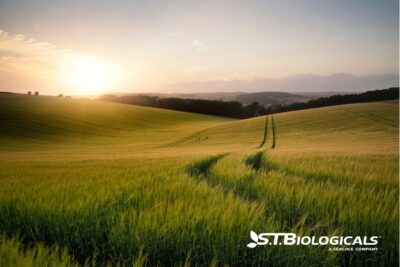With the adoption of precision ag technology, it’s become easier to monitor yield in real time as you harvest. Here are some tips to make that data as accurate as possible.
Yield Monitoring Systems and Maintenance
Your data is only as good as the accuracy of your measuring tool. Corn weighs differently than soybeans, which weighs differently than wheat. You need to calibrate your tool for each crop and throughout the harvest season.
Maintenance of your sensors is just as important as calibration. A clean system is more accurate than one that’s dusty with debris from last year’s harvest. Debris left from last year’s harvest can contaminate this year’s harvest, decreasing your ROI. Often, all you need to prepare your combine for harvest are a broom and dustpan.
Most yield monitoring systems are installed in a combine. If you have or plan to purchase a new combine, you can get lots of support from your dealer. But if you’re retrofitting a yield monitoring system on an older farm implement, you may need to reach out to the manufacturer to see what support is offered. You can also watch manufacturer training videos and talk to crop consultants like ours who can give you expert guidance.
Gathering Site-Specific Data
Your yield monitoring system can measure your crop’s moisture content, weight of grain, and volume of grain for a set period of time. With the cost of inputs so high, you want to make sure you’re getting the most bang for your buck. You also want to know how your experimental regen acres are producing compared to your conventional harvest.
Yield monitoring systems with real-time analysis can be set up to give you visual data on the yield variability in your fields. To produce an accurate yield map, your monitoring system has to be connected to GPS. Most newer farm implements have this feature.
But if you’re driving an old Massey Ferguson in your fields with a retrofitted yield monitoring system, GPS is another piece of the puzzle you have to implement. You can buy both new and used GPS systems.
You want your data to be as accurate as possible. That means you have to drive consistently, with few stops or changes in speed. You will also need to stay in a uniform swath. This all requires planning. When you make a turn at the end of the row, your system is still measuring, but most yield mapping software can make corrections.
Getting Everything Ready for Harvest
So, how do you make precision yield measuring technology effective for you? Preparing for harvest as early as possible gives you the lead time to fix broken parts, get required cables, or make needed updates to your technology. Here are the major tasks necessary to have accurate field crop readings.
- Make sure your GPS and other tech subscriptions are up to date. Pull your combine out of the barn and make sure the GPS receiver is working properly.
- Plan your harvest logistics. You will need a driver for the combine, the weigh wagon, and the off-field harvest truck. A whiteboard with a diagram of who needs to be where and when is invaluable for everyone involved.
- Check that last year’s data is safely stored in an external device or synced to the cloud. While you won’t need this data until after harvest, you sure don’t want to lose it by overriding it with this year’s data.
- Make sure your field boundaries are accurate. Planting data, spray data, and harvest data field boundaries should all sync. Otherwise, how do you determine if your operation is efficient?
- Verify all the info for the GPS offsets is correct. The number of rows, width, header width, header mount, and antenna location relative to your machine all need to be verified that they are consistent with other passes through the field throughout the season.
- Give everyone involved in harvest a way to take notes on what they see, hear, or smell in the fields. GPS can give us aggregated data, but human observation is needed to determine why one part of the field is underperforming. Does it have a weed problem? Was there a lot of lodging, and if so, why? Is there an area that was either very wet or very dry so germination and crop growth were variable? Do you have a flock of sandhill cranes in one of your grain fields?
This seems like a lot of work, but the data you gather is invaluable. That’s the value of precision technology for today’s ag. You can see by graphs, field maps, or other data which parts of your fields are underperforming, why, and best practices to improve your ag operation. Notes from human observation give you a lot of answers as to why you have field crop yield variability.
If you’re having trouble with this new-fangled technology, we can help. The ST Biologicals team can walk you through the steps to gather accurate monitoring system data. Yield is only one metric. What other metrics are you measuring that indicate how profitable and sustainable your ag operation is this year? How can you improve in the future? We’re here to help you succeed. When soil speaks, we listen.

